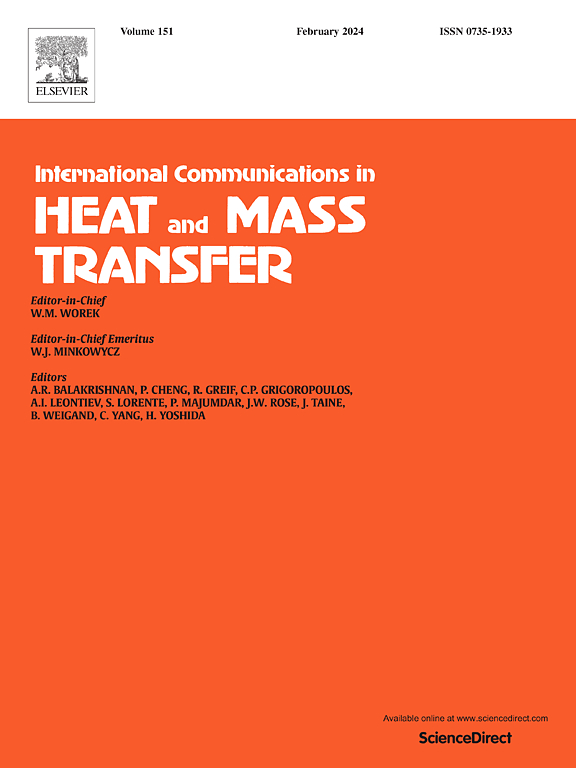Enhancing effective measurement time in rocket sled tests: A phase change material-based compensation method for coaxial thermocouples
IF 6.4
2区 工程技术
Q1 MECHANICS
International Communications in Heat and Mass Transfer
Pub Date : 2025-07-21
DOI:10.1016/j.icheatmasstransfer.2025.109392
引用次数: 0
Abstract
Rocket sled is a ground-based high-speed testing facility designed to simulate aerodynamic thermal environments and material performance of high-speed aircrafts under extreme conditions. To accurately measure surface heat flux of rocket sleds, this study proposed a compensation method that uses thermal regulation properties of phase change materials (PCMs) for coaxial thermocouple reference junctions, which allows heat flux inversion based on semi-infinite body approximation through surface temperature and thermophysical properties of material. Based on numerical simulations, this study systematically analyzed thermophysical properties and geometric parameters of coaxial thermocouples, thermal conductivity and latent heat of PCM, and effective measurement time under different Mach numbers. Results demonstrated that undersized thermocouple diameters made measurement junction overheating and inversion results overestimated, thus requiring appropriate diameter enlargement. Under 2.5 Ma with heat flux of 1 MW·m−2, by utilizing PCM for reference junction compensation, effective measurement time extended to 13.16 s, which was 112 % longer than that of stainless steel. Under 5 Ma and 13 MW·m−2 heat flux conditions, the effective measurement time was extended to 6.77 s, increasing by 86.5 % compared to stainless steel. Furthermore, thermophysical analysis of PCM indicated that PCM with high latent heat and low thermal conductivity can more effectively prolong measurement time.

提高火箭橇试验有效测量时间:一种基于相变材料的同轴热电偶补偿方法
火箭雪橇是一种地面高速测试设备,旨在模拟极端条件下高速飞机的气动热环境和材料性能。为了精确测量火箭sleds表面热流密度,本研究提出了一种利用相变材料(PCMs)的热调节特性作为同轴热电偶参考结点的补偿方法,通过材料的表面温度和热物理特性,实现基于半无限体近似的热流密度反演。在数值模拟的基础上,系统分析了不同马赫数下同轴热电偶的热物理性质和几何参数、PCM的导热系数和潜热以及有效测量时间。结果表明,尺寸过小的热电偶直径会导致测量结过热和反演结果高估,因此需要适当扩大直径。在热流密度为1 MW·m−2的2.5 Ma条件下,利用PCM作为基准结补偿,有效测量时间延长至13.16 s,比不锈钢延长了112%。在5 Ma和13 MW·m−2热流密度条件下,有效测量时间延长至6.77 s,比不锈钢提高了86.5%。此外,对PCM的热物理分析表明,高潜热和低导热系数的PCM可以更有效地延长测量时间。
本文章由计算机程序翻译,如有差异,请以英文原文为准。
求助全文
约1分钟内获得全文
求助全文
来源期刊
CiteScore
11.00
自引率
10.00%
发文量
648
审稿时长
32 days
期刊介绍:
International Communications in Heat and Mass Transfer serves as a world forum for the rapid dissemination of new ideas, new measurement techniques, preliminary findings of ongoing investigations, discussions, and criticisms in the field of heat and mass transfer. Two types of manuscript will be considered for publication: communications (short reports of new work or discussions of work which has already been published) and summaries (abstracts of reports, theses or manuscripts which are too long for publication in full). Together with its companion publication, International Journal of Heat and Mass Transfer, with which it shares the same Board of Editors, this journal is read by research workers and engineers throughout the world.

 求助内容:
求助内容: 应助结果提醒方式:
应助结果提醒方式:


